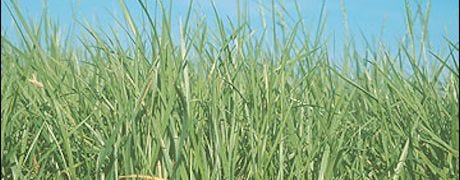April 8, 2015

Lime, nitrogen and phosphorus are three key ingredients in increasing the yield of a pasture for haying or grazing. However, it is good to understand aspects of a fertilization program in order to have the best impact on a fescue field according to Jill Scheidt, agronomy specialist with University of Missouri Extension.
A soil test should be the first step taken in order to determine nutrient needs of the pasture and to help manage overall costs.
Liming is the second step in the fertilizing process.

"The best solution to offsetting the negative effects of fescue toxicosis is by planting new pastures to novel endophyte fescue varieties mixed with legumes," said Scheidt.
"Lime must be applied in order to make other nutrients available to the plants for uptake; this is especially important if legumes are in the field, as clovers need phosphorus available for increased persistence," said Scheidt.
Watch pH levels
A pH of 6.0 to 6.5 is desired, especially for clover establishment and maintenance. Lime should be applied at least 6 months before it is needed; it takes 6 months for 80% of applied lime to be broken down and 9 months to completely break down lime.
Set The Schedule For Hay Quality. Deciding when to make the first cutting of hay sets the stage for the rest of the year. Download our FREE report Bailing Up Hay-Making Costs: A Buyer's Guide today.
If legumes are present in the field and make up at least 20% to 30% of the desirable plant stand, less nitrogen will be needed, as legumes aid in nitrogen fixation. Legumes need at least 30-pounds-per- acre of phosphorus to persist in pastures.
Legumes improve the quality of forage, particularly in endophyte-infected tall fescue pastures.
"The best solution to offsetting the negative effects of fescue toxicosis is by planting new pastures to novel endophyte fescue varieties mixed with legumes. Legumes can eliminate spring nitrogen applications reducing fertilizer nitrogen need up to 100-pounds-per-acre," said Scheidt.
If nitrogen is applied at too high a rate, over 100-pounds-per-year, in a legume/fescue mixed pasture, the legume population will be reduced.
~~~PAGE_BREAK_HERE~~~
Determining the actual percentage of legumes present in a pasture by visual estimates can be difficult.
"There is good rule to use for visually determining the percent of yield from the legume component in a pasture. Estimate the percentage of canopy cover as legume, when the pasture canopy is six to eight inches tall and then divide by two to get the approximate season-long dry matter contribution from the legume," said Scheidt.
For example, if the canopy of white clover in a pasture is estimated to be approximately 30% then the percent legume as dry matter in that pasture would be about 15%. Obviously, a high percentage of canopy cover from the legume is necessary to provide all the advantages attributed to grass-legume mixtures.
Ideal times for nitrogen application
Split applications of nitrogen in the fall and spring help make the growing season more uniform by increasing productivity during less productive times of the season. Optimum application window for fall nitrogen in fescue pastures starts around Aug. 1 and response to fall-applied nitrogen decreases incrementally after Sept.1.
March is probably still the ideal time for nitrogen application to grass, especially hay. Pastures may benefit from delaying application into April or even May in order to push the grazing period farther into the summer.
Spring fertilization encourages summer growth during low rainfall periods that occur during the summer.
Two split applications equaling 100 to 120 pounds of nitrogen per acre per year can be applied to fescue-only pastures. A fescue-legume mix pasture with less than 20% legumes should have two split applications equaling 60 to 80 pounds of nitrogen per acre per year.
"If there are 20 to 30 percentage legumes present in a fescue-legume mix pasture only one fall application should be applied in the amount of 50 pounds of nitrogen per acre," said Scheidt.
Source: MU Extension
You May Also Like




